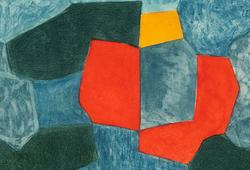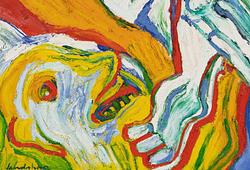Bror Lindh
Winter landscape with cottages
Signed Bror Lindh. Oil on canvas 80.5 x 73 cm.
Alkuperä - Provenienssi
Private Collection, Sweden.
Muut tiedot
In the auction's current painting, we encounter Bror Lindh in his most characteristic expression - understated, poetic, and restrained. A snow-covered landscape unfolds in a quiet light that hovers somewhere between night and day. Is it the first dawn rising over the forest, or the last note of twilight lingering? The light remains ambiguous and charged - a state rather than a moment. It is this uncertainty that lends the painting its particular atmosphere, where nature rests in a kind of silent breath.
Bror Lindh was born in 1877 in Frykerud, Värmland. After working with decorative painting during his upbringing, he came into contact with the artist Gustaf Fjæstad in Arvika, who encouraged him to seek formal art education. Lindh was admitted to the Royal Academy of Fine Arts in Stockholm in 1899. However, city life would never become his own. After a personal crisis, he returned to Värmland, where he chose a life of simplicity, silence, and closeness to nature - a life he faithfully lived until his death in 1941.
He became part of the so-called Rackstad group, an artist colony in the Arvika region that gathered painters, sculptors, and craftspeople around ideas of the value of craftsmanship, the simple life, and the central role of nature in art. The group emerged around the sculptor Christian Eriksson and the artist couple Gustaf and Maja Fjæstad, united by a strong national romantic ethos and a desire to reconnect with Swedish traditions and the soul of the landscape.
Unlike several of the group's more decorative or craft-oriented expressions, Bror Lindh developed a deeply personal painting style. His works are characterised by a restrained colour palette, meditative calm, and a search for the inner voice of the landscape. Winter Landscape with Cottages is a clear example of this. There is no narrative, no people, no traces of modern life. All that remains is the light, the snow, and the silence rendered with a tender precision.
Lindh rarely painted in grand gestures. Instead, he sought the spiritual in the everyday, the timeless in the momentary. In this painting, he embodies the innermost ideals of the Rackstad colony: a connection between art, nature, and the quiet passage of life.







































